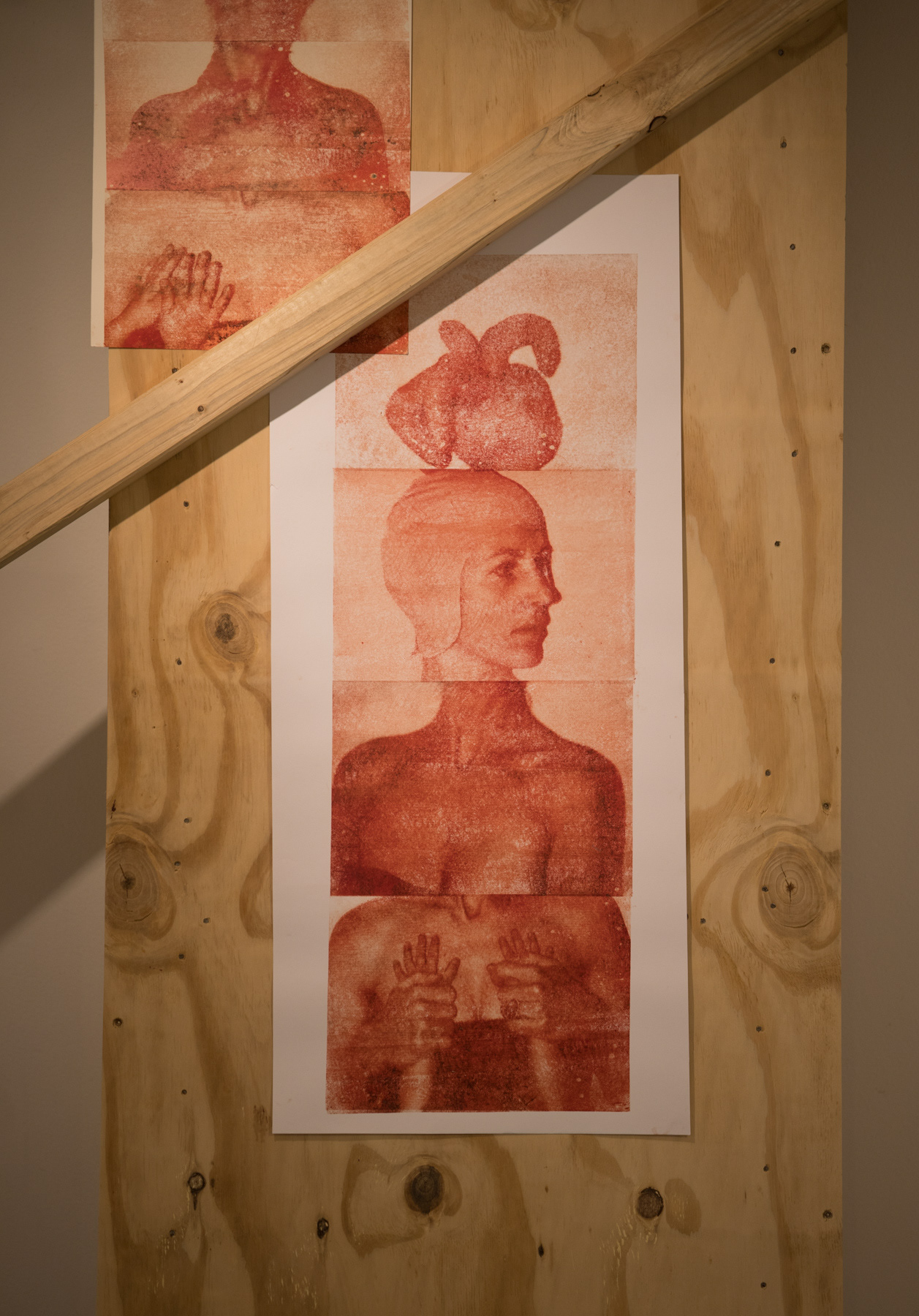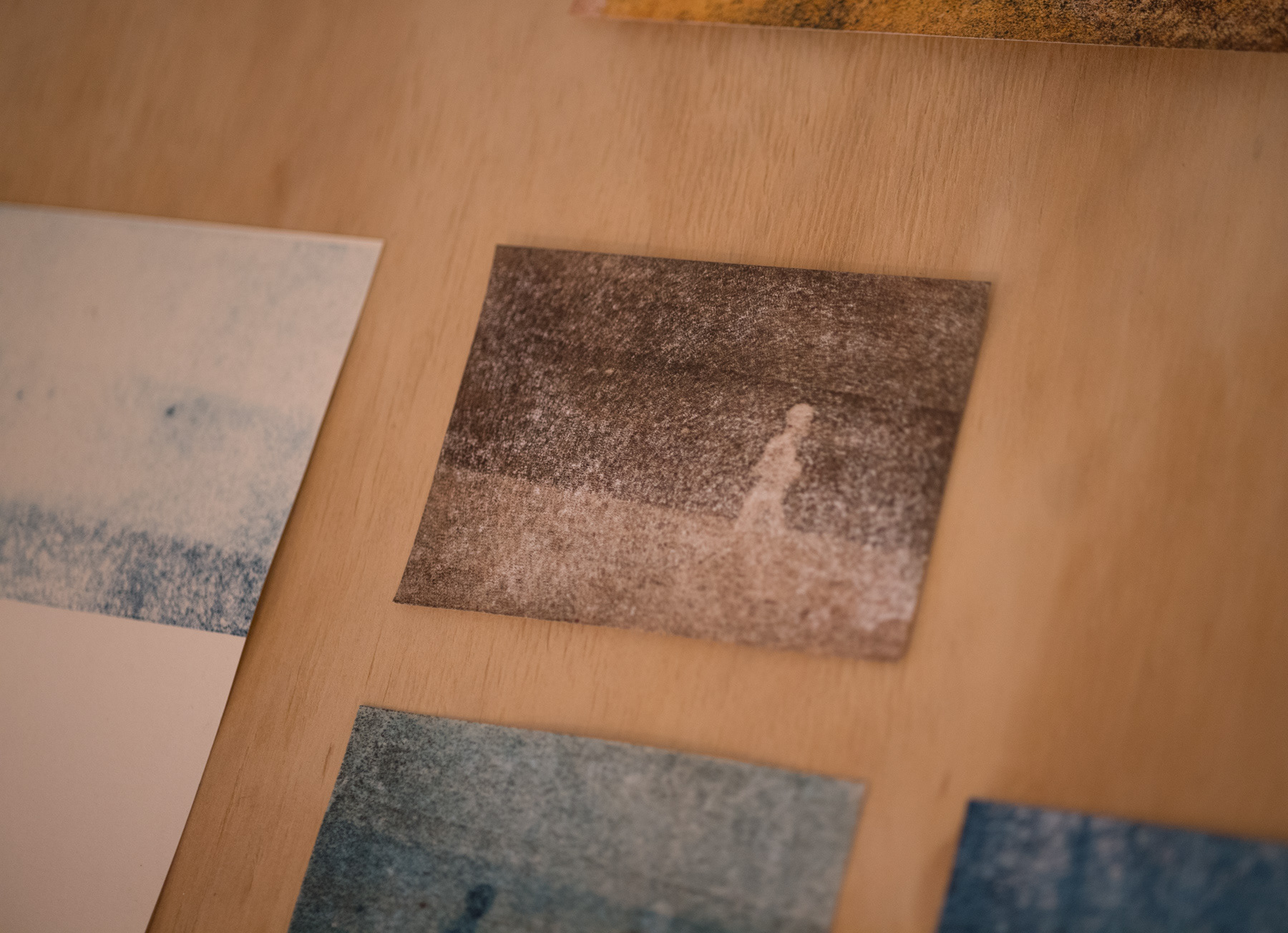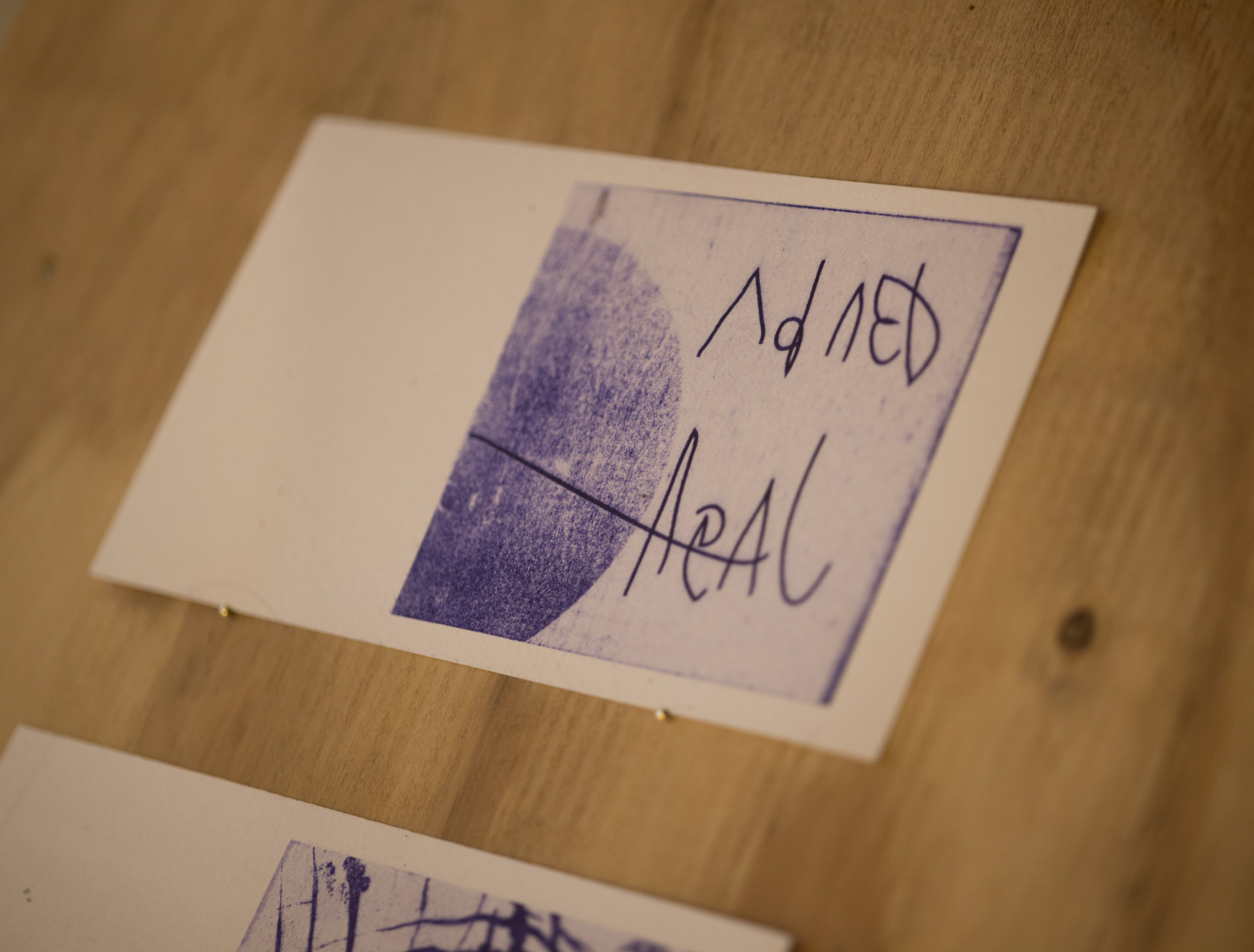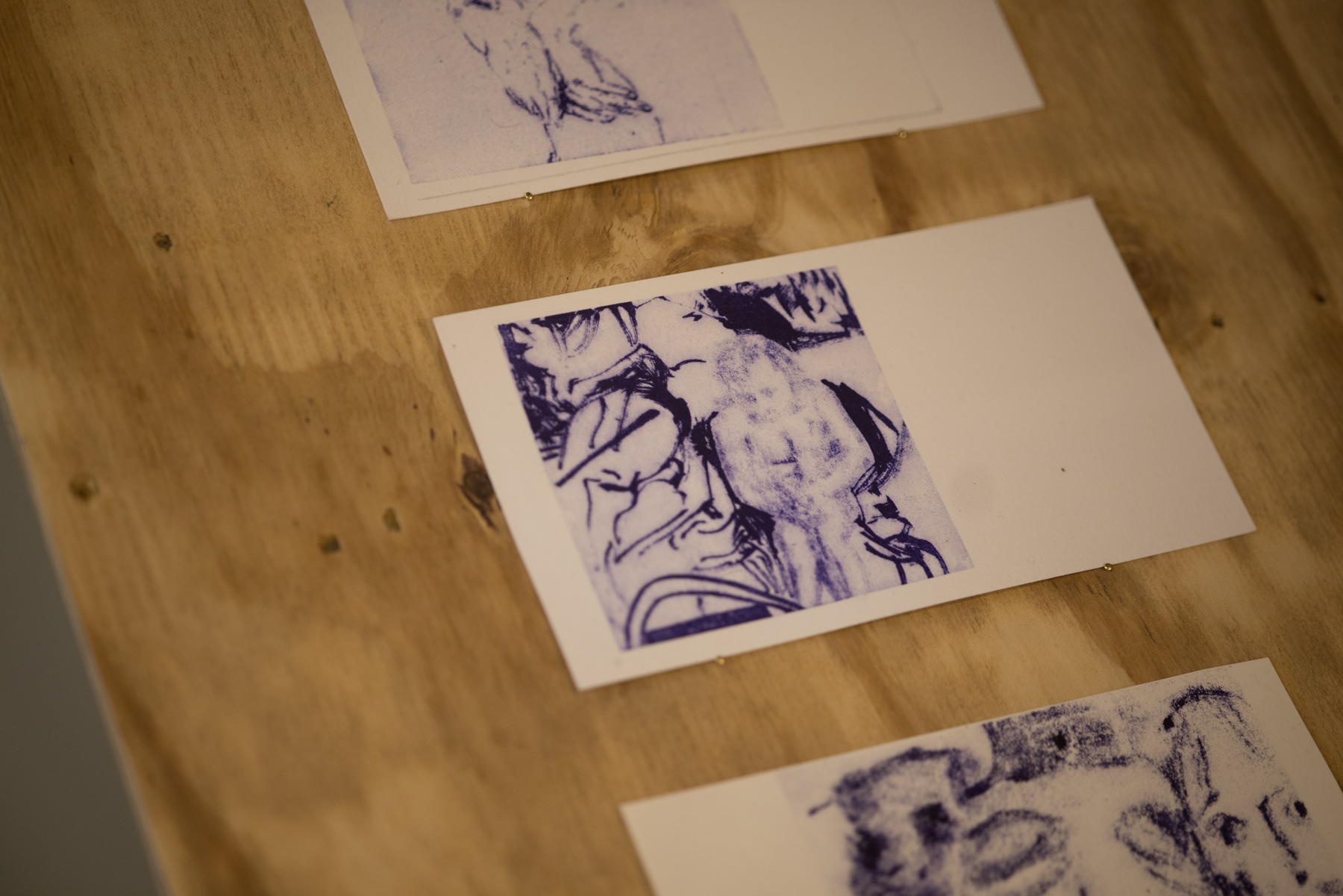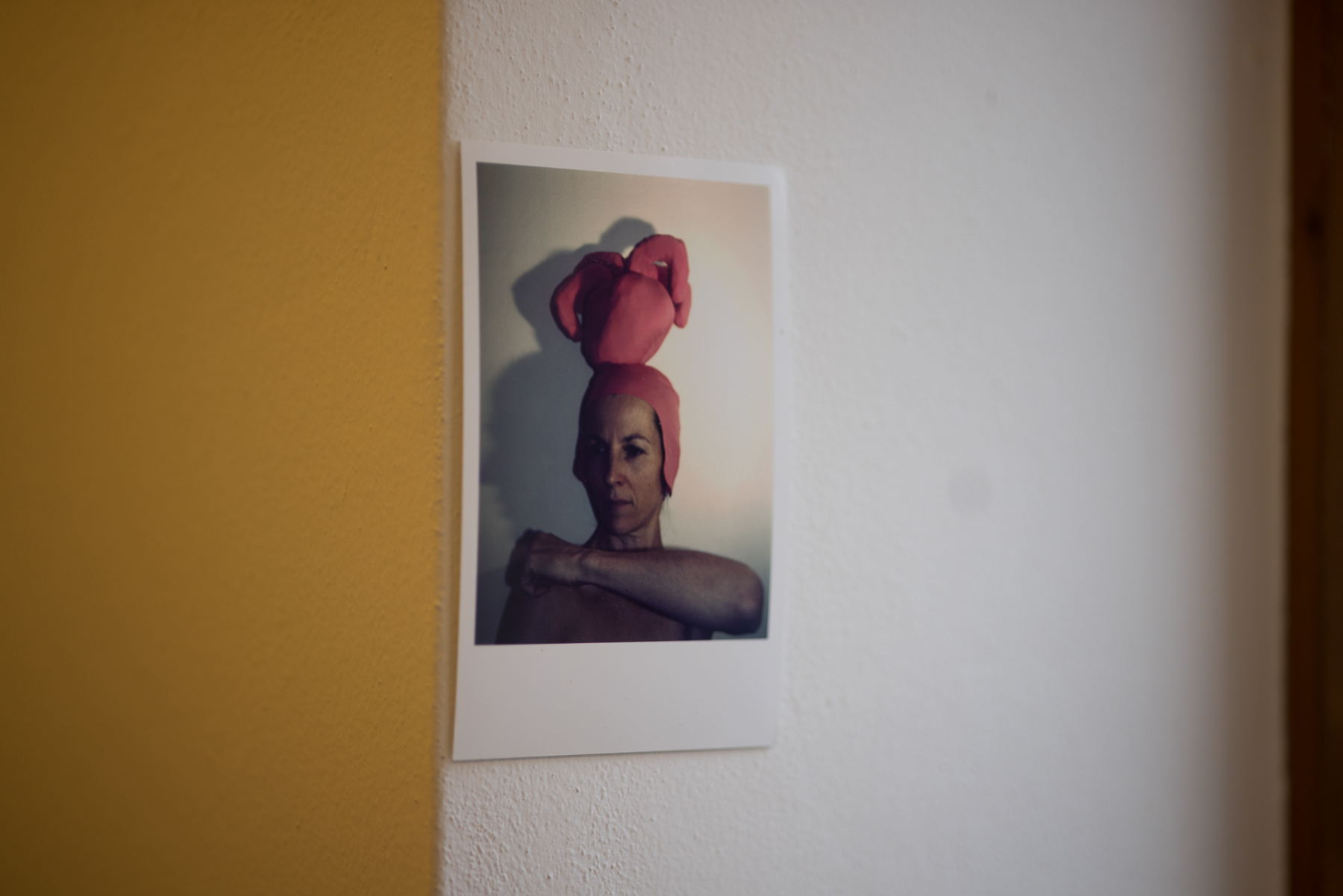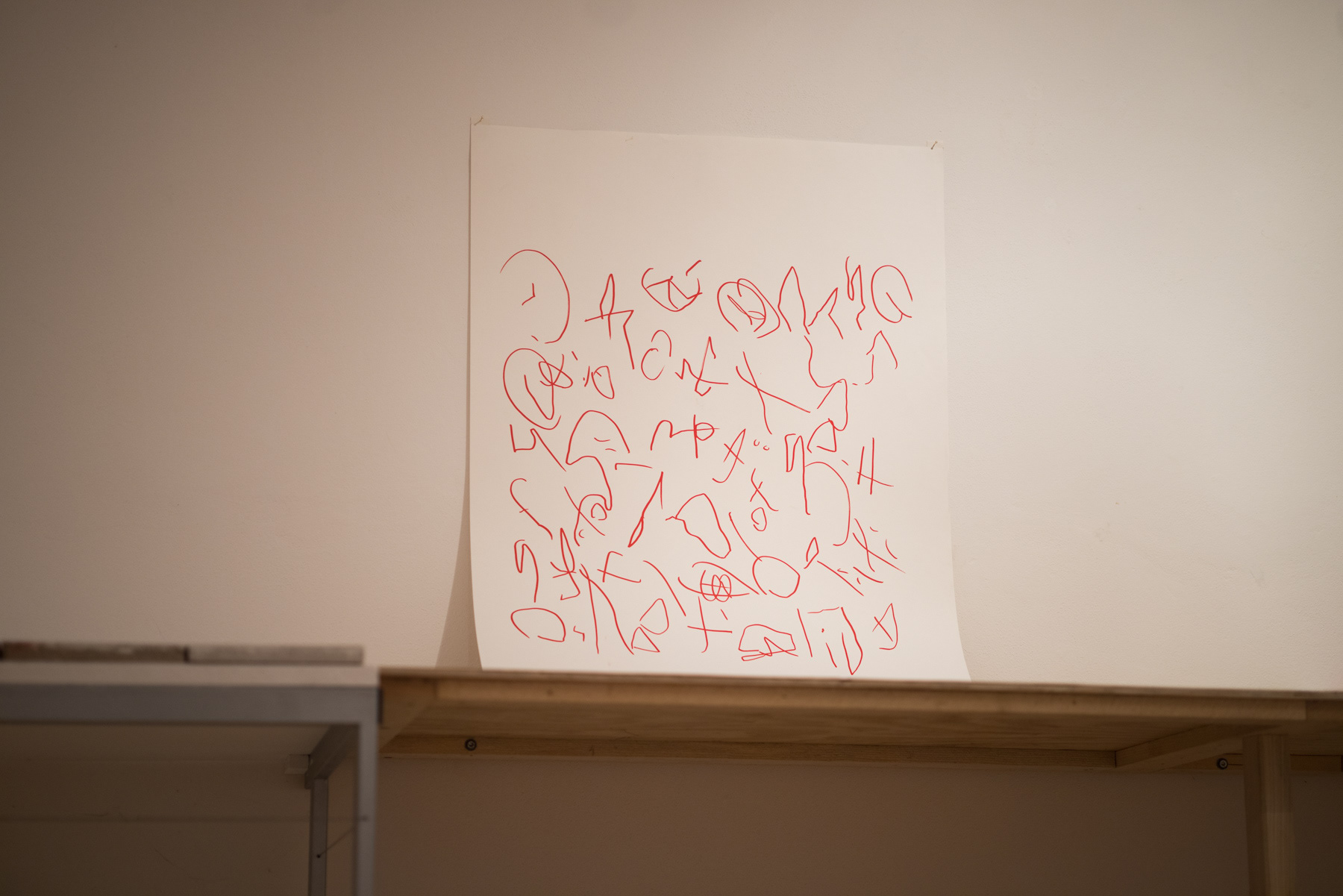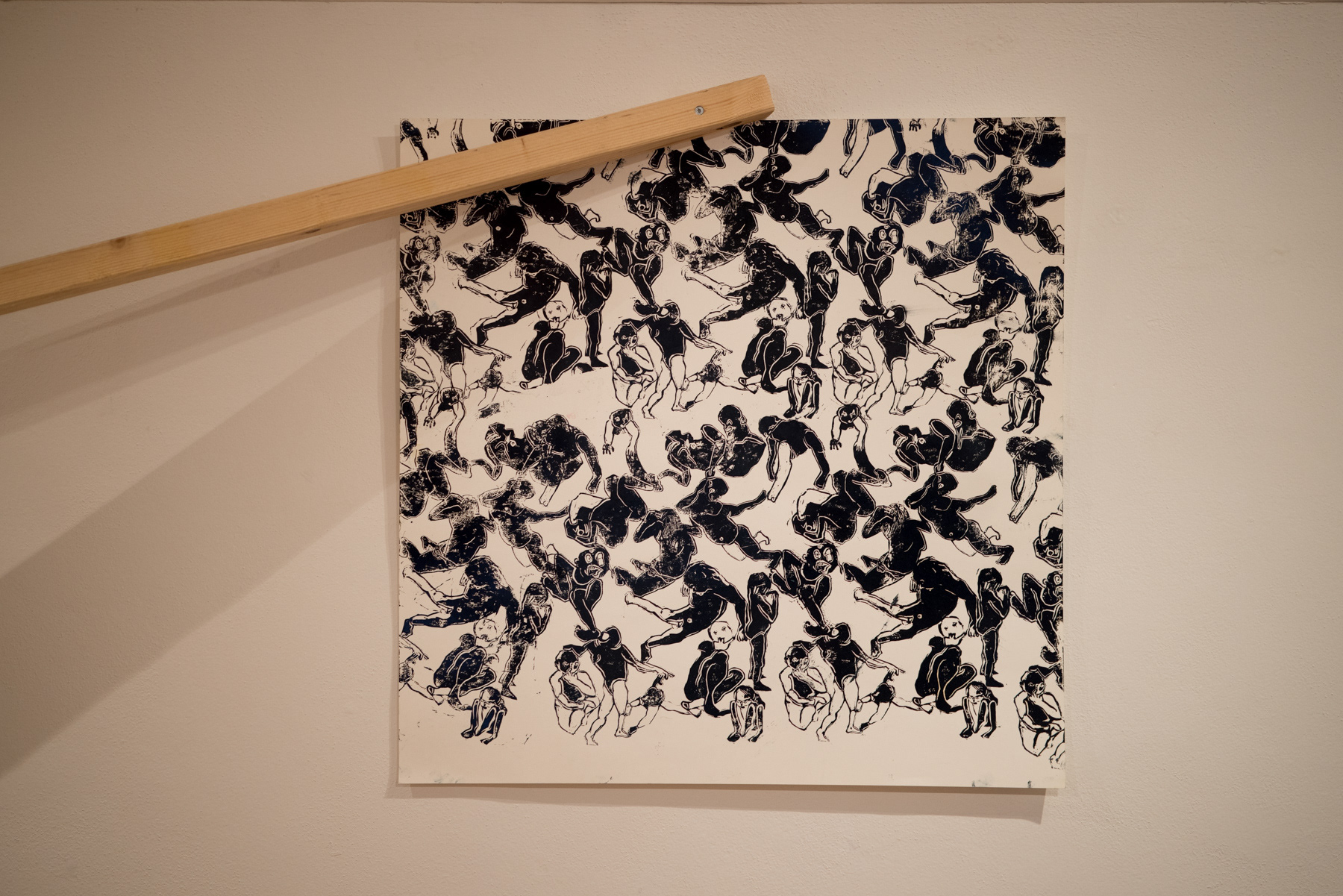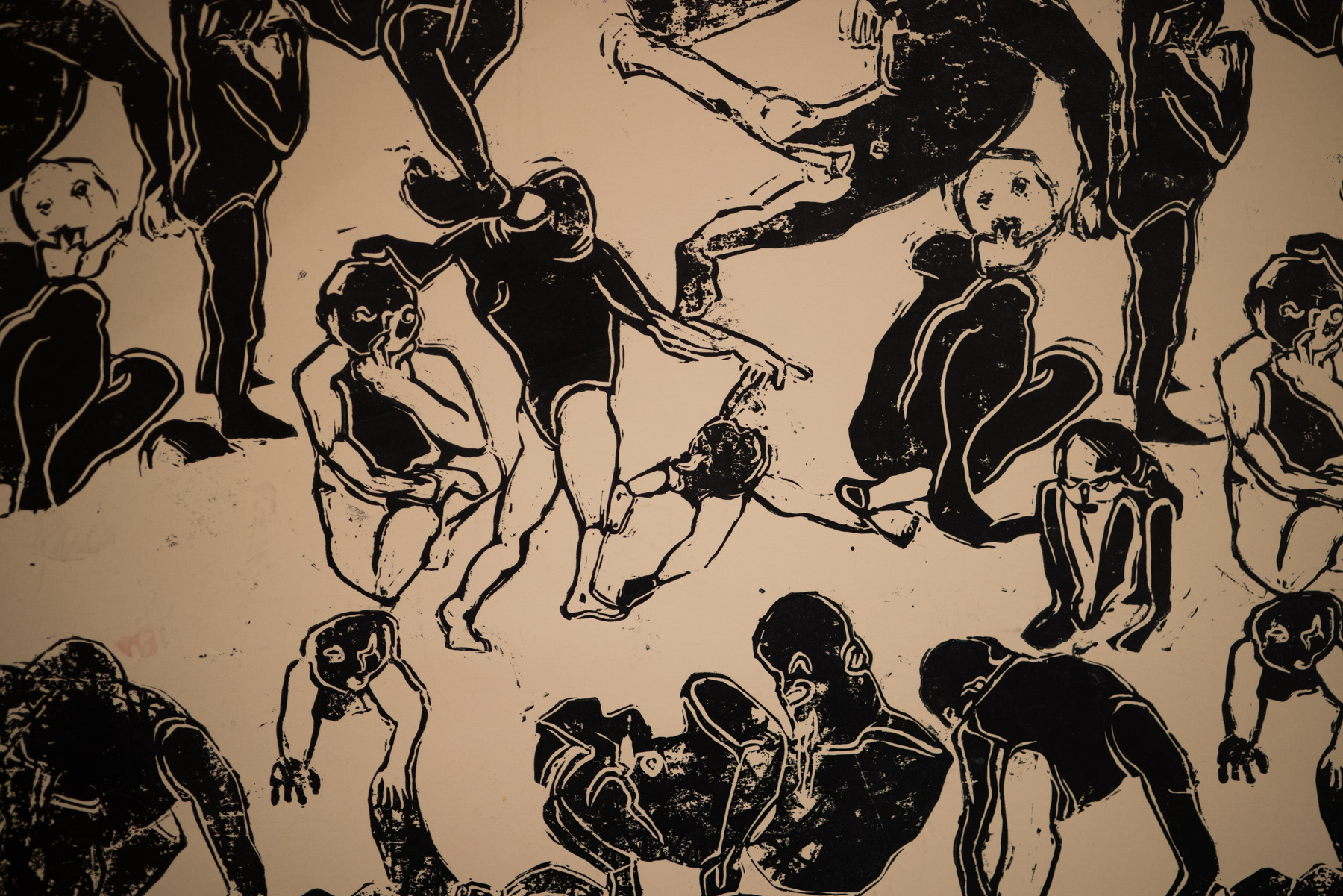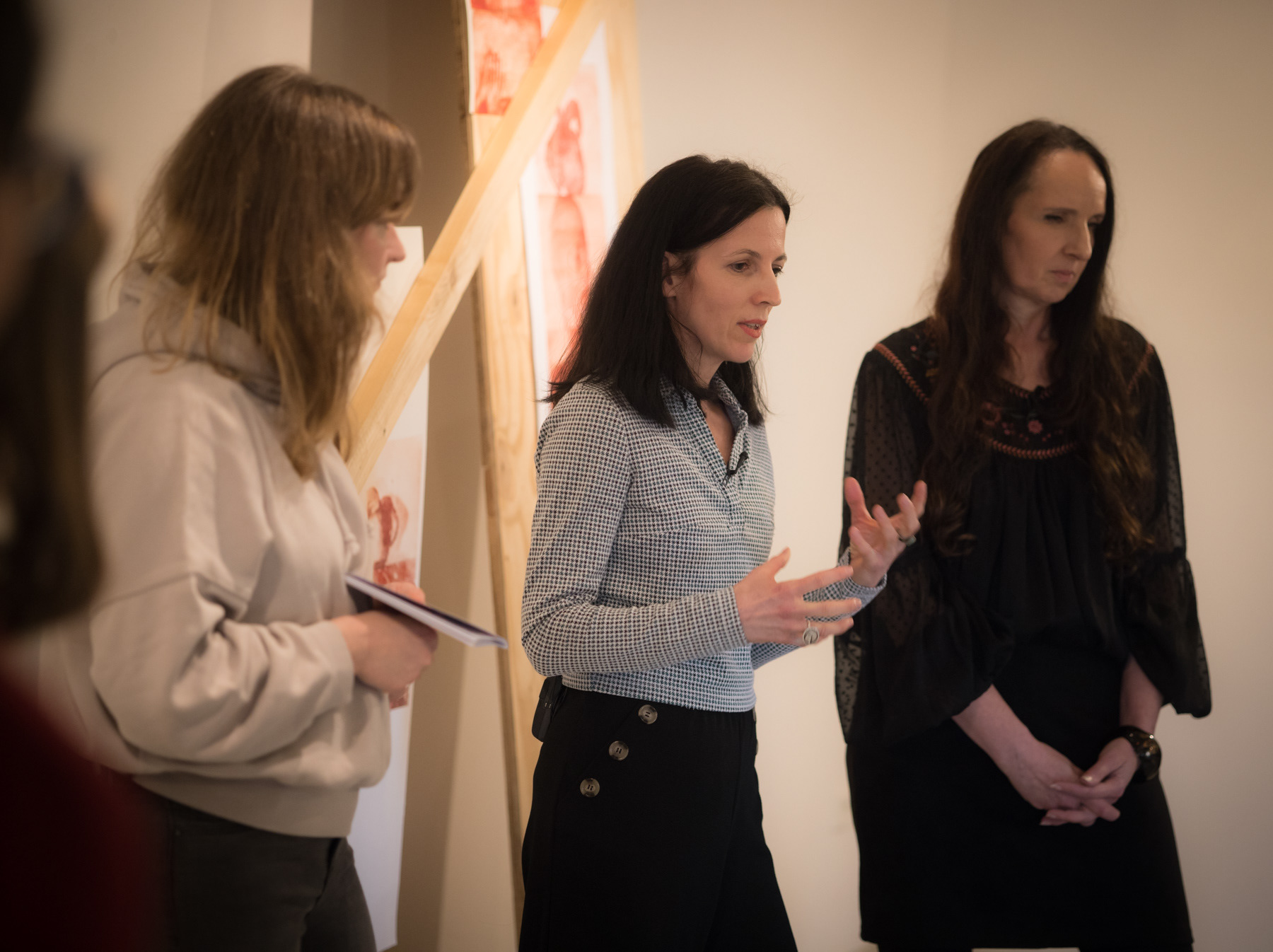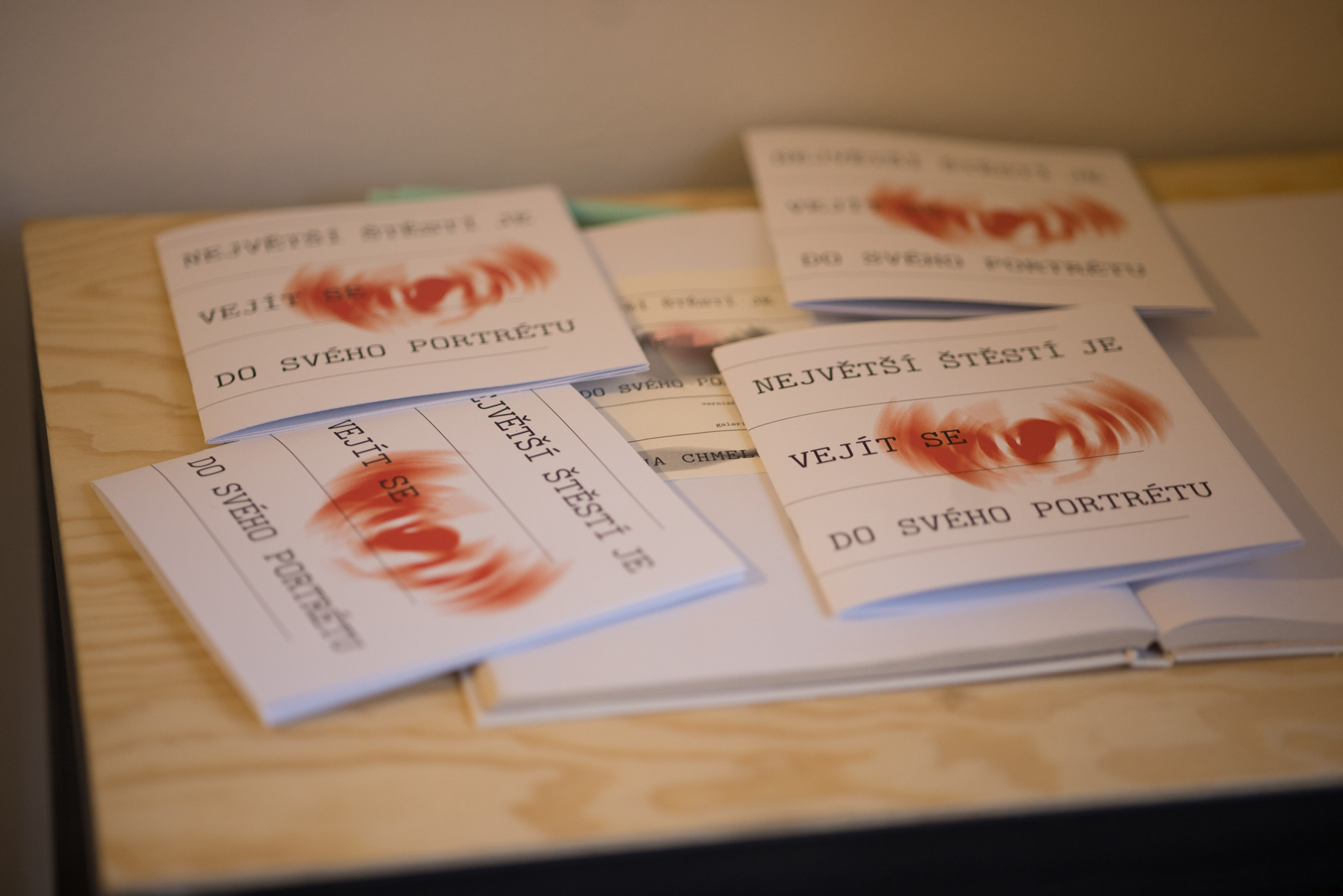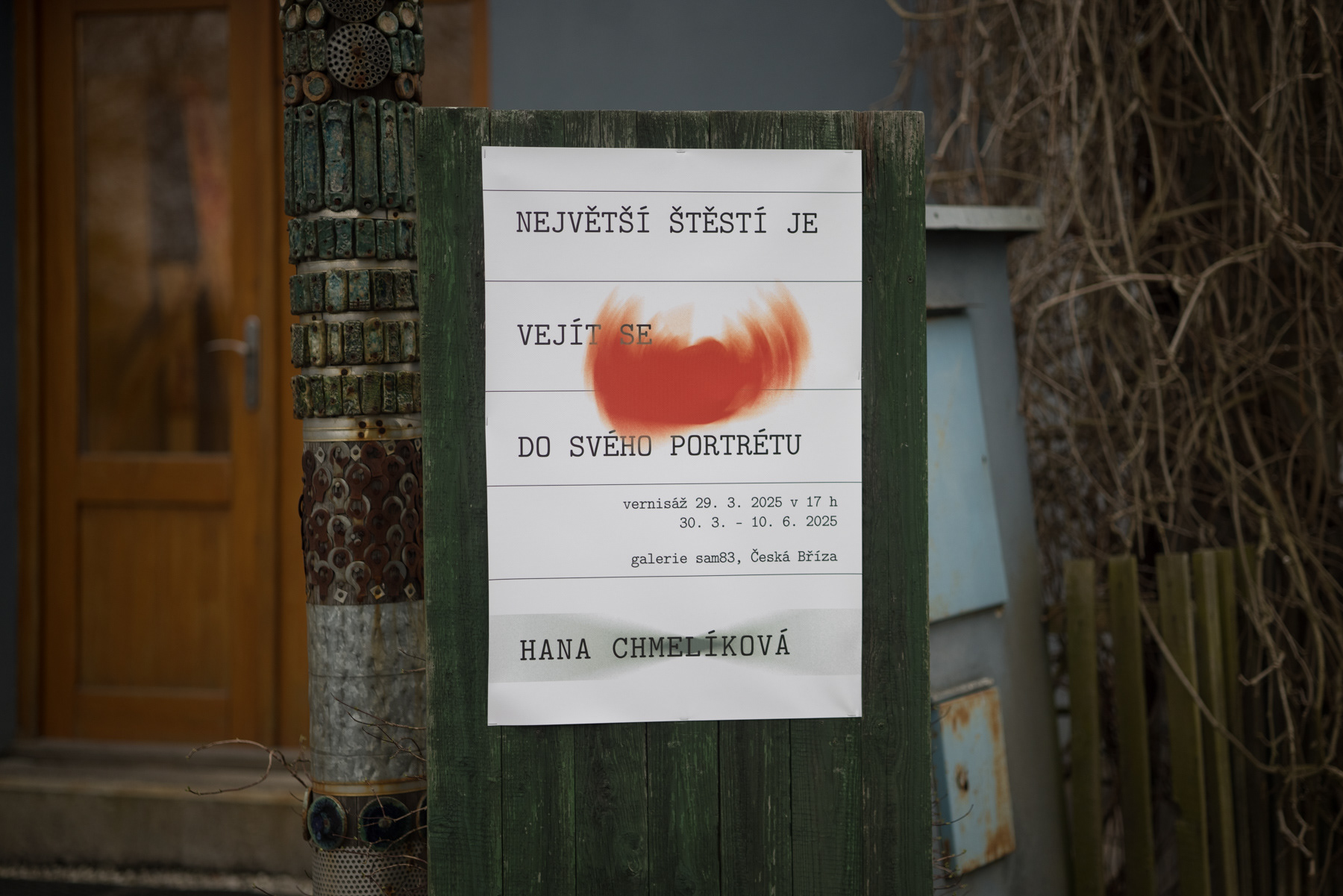Touch can be understood as the first form of inscription – an imprint, a contact, a haptic experience between mother and child, a tactile memory. Maurice Merleau-Ponty emphasized that touch is both active and passive at the same time—when we touch someone, we simultaneously feel their touch in return. This dual moment can be seen as a fundamental form of “transmission of meaning,” Derrida’s archi-écriture or the “proto-writing” of corporeality.
Drawing here emerges as a medium of speech, understanding, and touch. Through it, Hana touches bodies, thoughts, and questions, seeking answers through the act of drawing itself. Her drawings are usually monochromatic, centered around a central motif. They frequently depict contact or records of speech between undefined bodies – childlike, adult, feminine, solitary, paired. The series Red Vocabulary, created over two years, captures the mutual positions of incomplete or interwoven bodies, their improbable postures, as well as gestures, sometimes accompanied by text. These works evoke intimacy, tension, and a desire for transformation – an exploration of alternative parameters of relationality. Her visual language resembles pictograms, forming a new “lexicon” of visual codes for a kind of “new proximity.”
Her drawing style is precise yet hesitant to fully articulate itself, as if suggestion alone suffices. At the same time, it portrays affinity or discomfort without shame. The color red is not incidental; it connects her work to another recurring element—the motif of the heart. This motif appears randomly across various graphic, photographic, and performative works.
Hana publishes zines out of a need to document and contextualize recent and current experiences and observations, capturing urgent personal statements of a given period. These publications are titled Love Aside / One Woman Journal, and each issue speaks through a visual language that oscillates somewhere between haute couture magazines, intellectual journals, and reminiscences of post-socialist aesthetics. In contrast to the visual content, which allows for more associative interpretation, the texts make the themes more explicit.
Objects are also present in her work. Among them are original cement tiles, which, when arranged randomly, suggest a pattern – although they were initially intended as a form of self-portraiture. The figure encoded within them serves as both a pretext and a space for haptic experience. The eye perceives shape through touch, engaging with its materiality rather than merely scanning its surface.
What connects all aspects of Hana´s work is the space of the ineffable, a theme she explores in her dissertation. Her research focuses on the closest family relationships, their imagery ̶ their promises, and their alternatives. By creating a set of specific communicative signs, she seeks to capture (as a kind of portrait) the uniqueness of any given family unit, recording its specific habits and patterns. In doing so, she aims to uncover relational possibilities we hardly dare dream of.
Galerie SAM83, Česká Bříza
curator: Sráč Sam
March 29 – May 10, 2025
text: Denisa Bytelováphoto: Radek Dětinský
